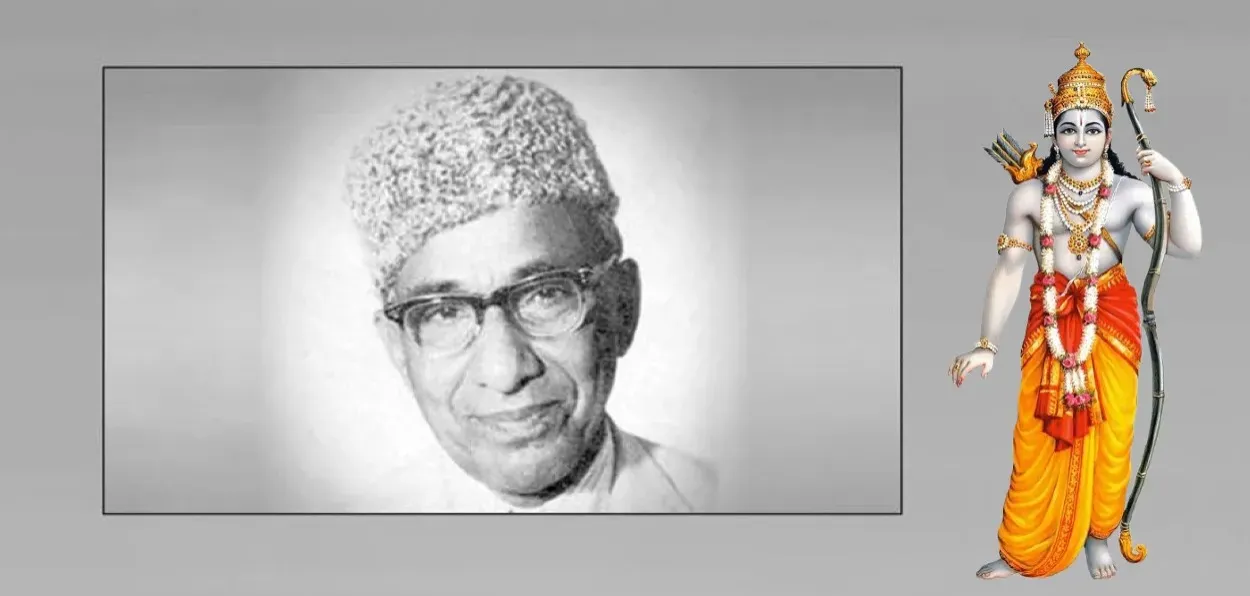
Saquib Salim
“Agar kuchh aql hoti Ramchandra ji se laDte kyu? Ye zaalim apni himmat dekhte itna akaDte kyu?” (If they had an iota of wisdom, they wouldn’t have fought with Lord Rama. These tyrants should have compared their strength before taking pride in it).
These lines were written by a Muslim poet in Urdu who also wrote the national anthem of Pakistan.
Well, known lyricist Hafeez Jalandhari was a devout Muslim, author of Shahnama-e-Islam(a history of Islam), writer of the national anthem of Pakistan, and a Hafiz-e-Quran (one who has memorized Quran).
Contrary to popular perception, Hafeez has not only used Hindu imagery in his poems but at times also praised Hindu gods, goddesses, and teachings. In one of his poems he wrote, Namaz, Haj, Yatra, and Puja, each of these modes of prayer is good… Guru Granth Sahib, Bible, Vedas and Quran have the same message of piety, Whether one is a Sikh or a Christian, a Hindu or a Muslim, it’s a must that a human empathises with another human. This is the real prayer to God.
The above poem where Lord Rama is being praised is titled Dussehra and is part of a book, Bahar ke Phool (Flowers of Spring), written for the children. The book contains poems on other Hindu festivals as well.
Hafeez writes, “Kai din se laga karta hai mela Ram-Lila ka, Akhada jamta hai maidan mai har shaam Lila ka” (For several days fair of Ram Lila is there, Play of Ram Lila is being played in the ground every evening).
The poet goes on to explain how it was the conclusion of several days of festivities and Ram-Lila. The fair had shops, toys, eateries, and several activities for kids. The effigies of Ravana and Meghnad are also explained in the poem. These effigies were huge and looked scary for a normal human.
In the subsequent lines, Hafeez goes on to tell kids about the basic story behind this effigy burning. The tone of respect for Lord Rama cannot be missed here.
“Wo jis ke tan pe das sar hain, usi ka naam Ravan tha, Ye tha Lanka ka Raja, Ramchandra ji ka dushman tha,,, Akad kar jo khada hai dusra Ravan ka beta tha, Bada shehzor tha ye bhi magar qismat ka heta tha” (The one with ten heads was Ravan, he was the king of Lanka and an enemy of Ramchandra ji… The other standing proudly was the son of Ravan, he was valorous but destiny made him evil).
Children are told that Ramayan is an account of this battle between Lord Rama and Ravan. Hafeez writes, “Zamana aaj tak is fatah ki khushiya manata hai, Ladai ka tamasha har baras sabko dikhata hai” (People still celebrate this victory, The scene of the battle is recreated every for the people).
The poem paints a picture of Lord Rama, Sita, and Lakshman would come and these effigies would be burnt down. People will rejoice and recall this great victory of truth over falsehood.
ALSO READ: Khwaja Hasan Nizami used Sri Krishna's story to unite Indians
This poem by Hafeez brings out an important point that taking moral lessons from Lord Rama is part of Indian culture and devout Muslims never thought otherwise. Rather, people like Hafeez who would write books on Islam have also written eulogies for Ganga, Lord Krishna, Lord Shiva, Lord Rama and several other Hindu practices and symbols.
